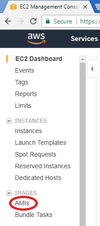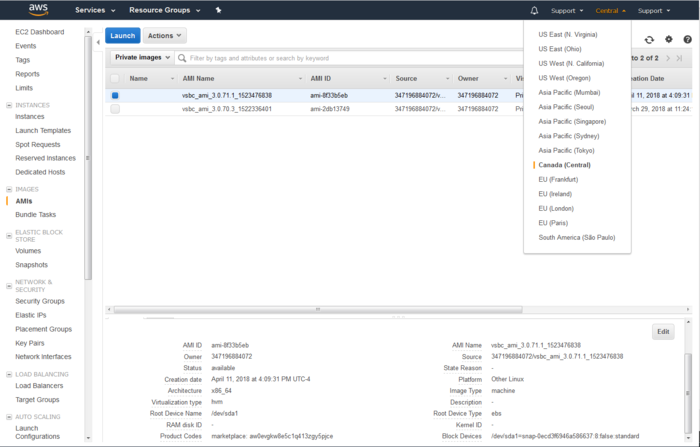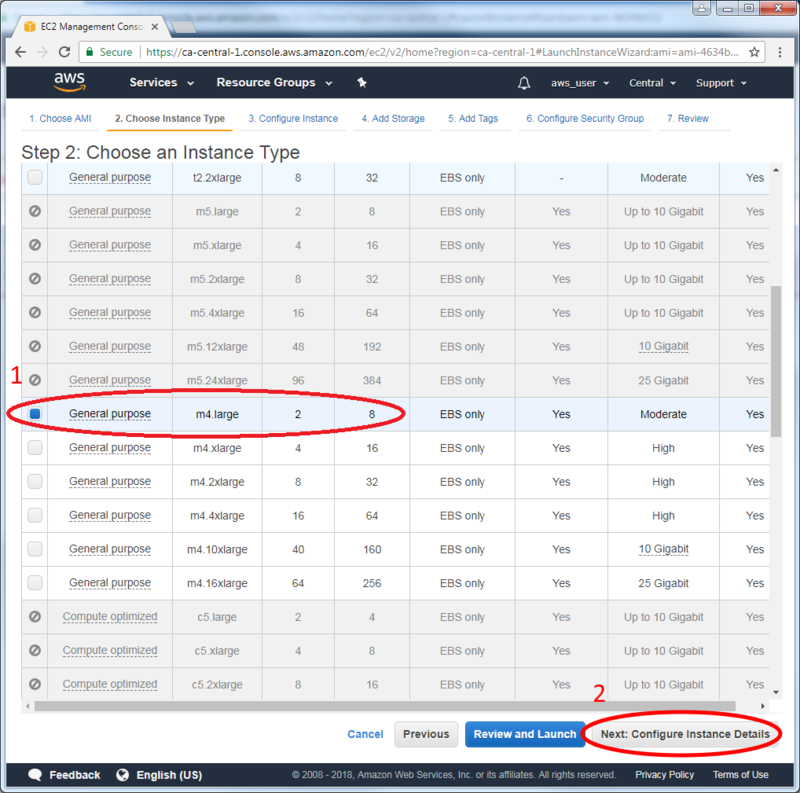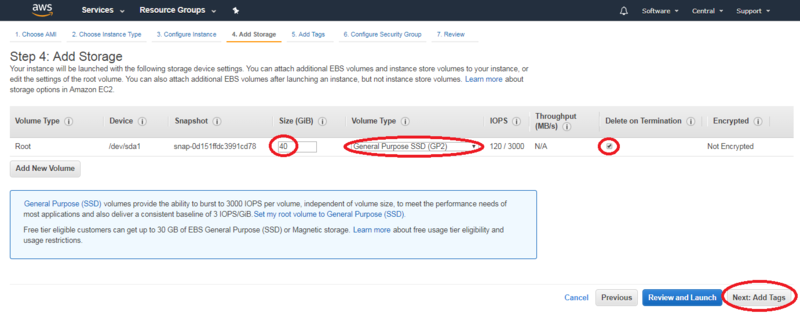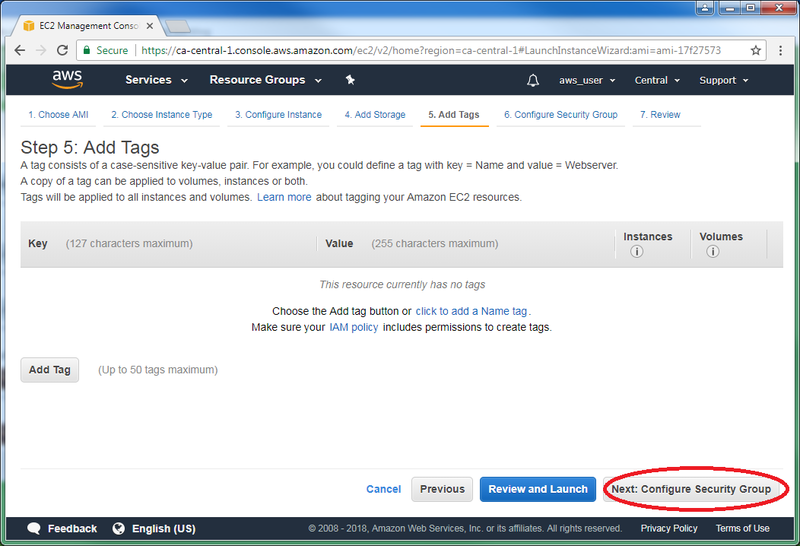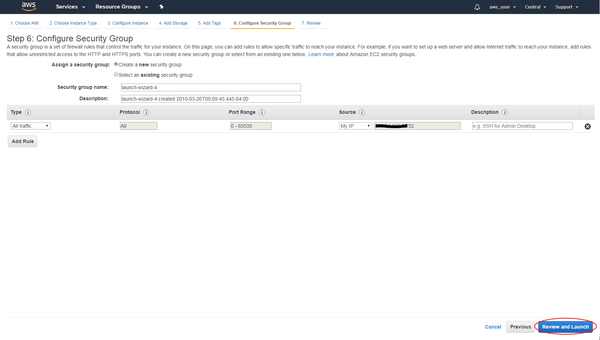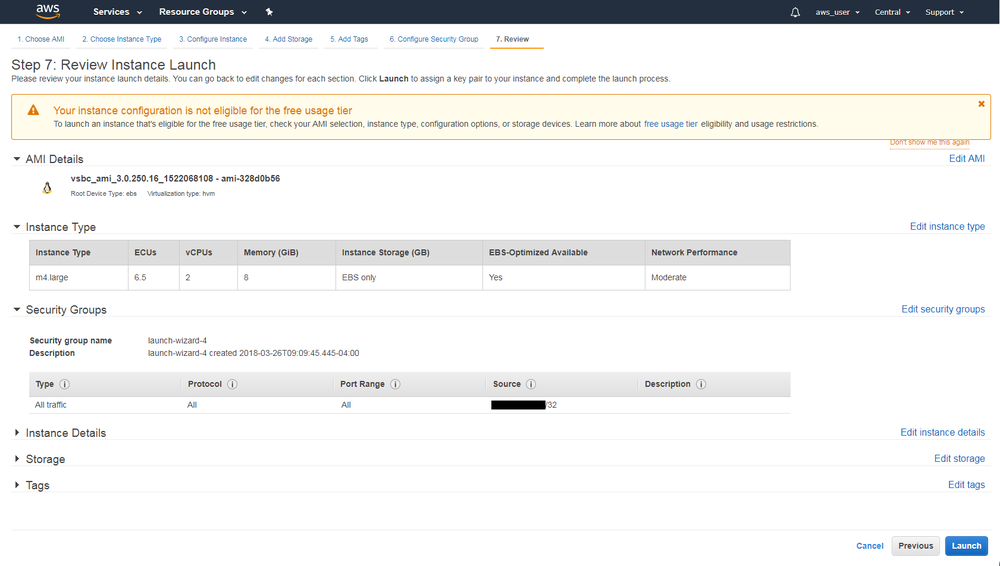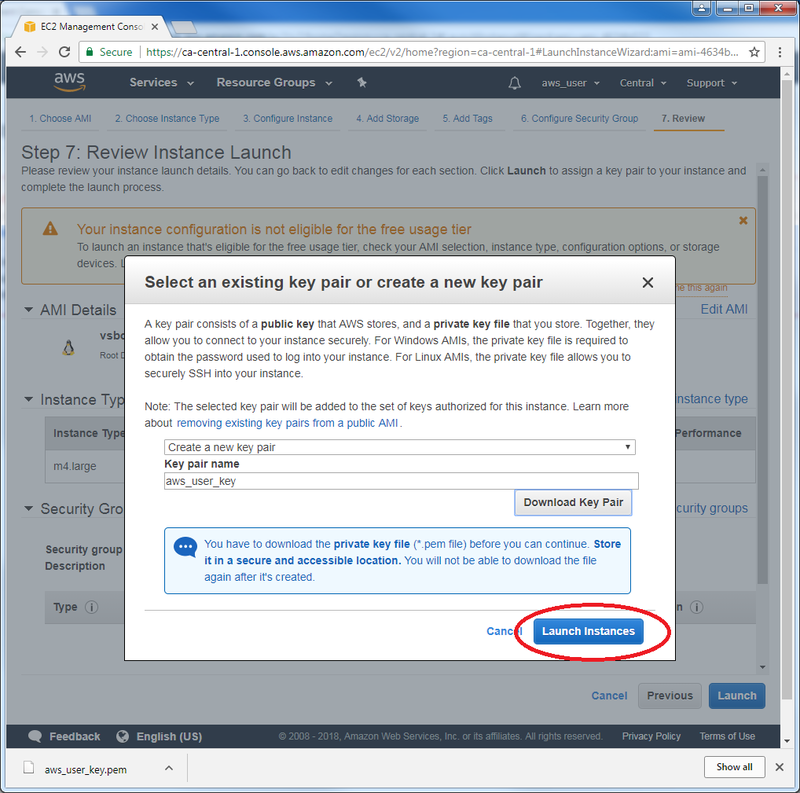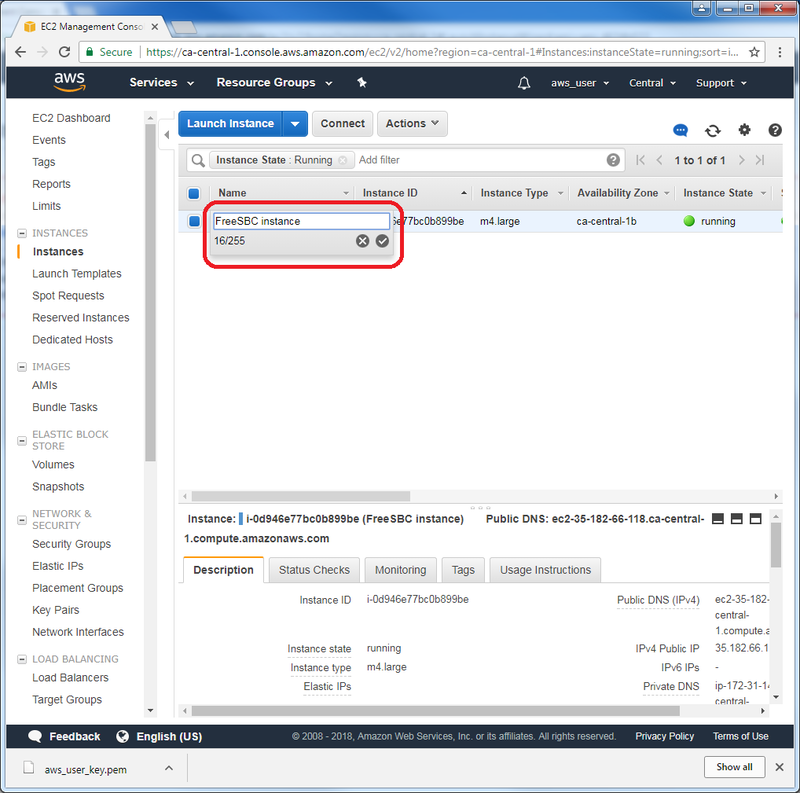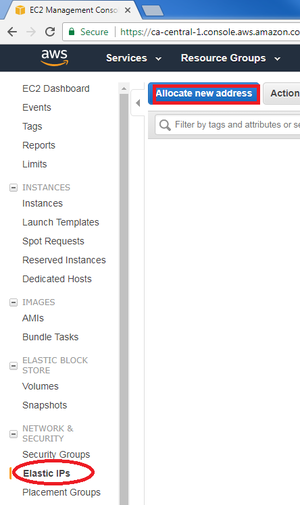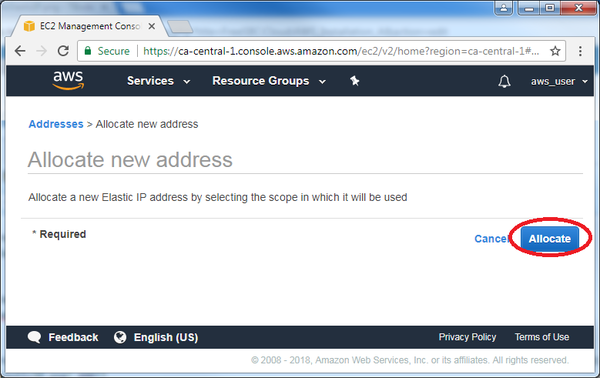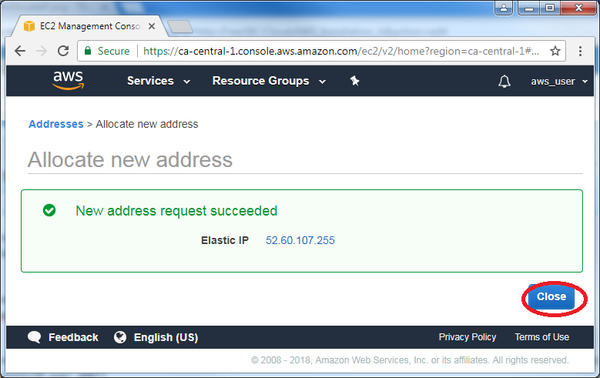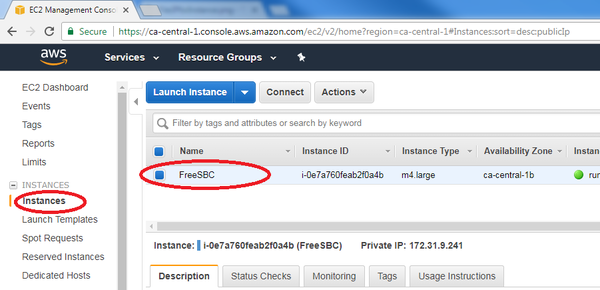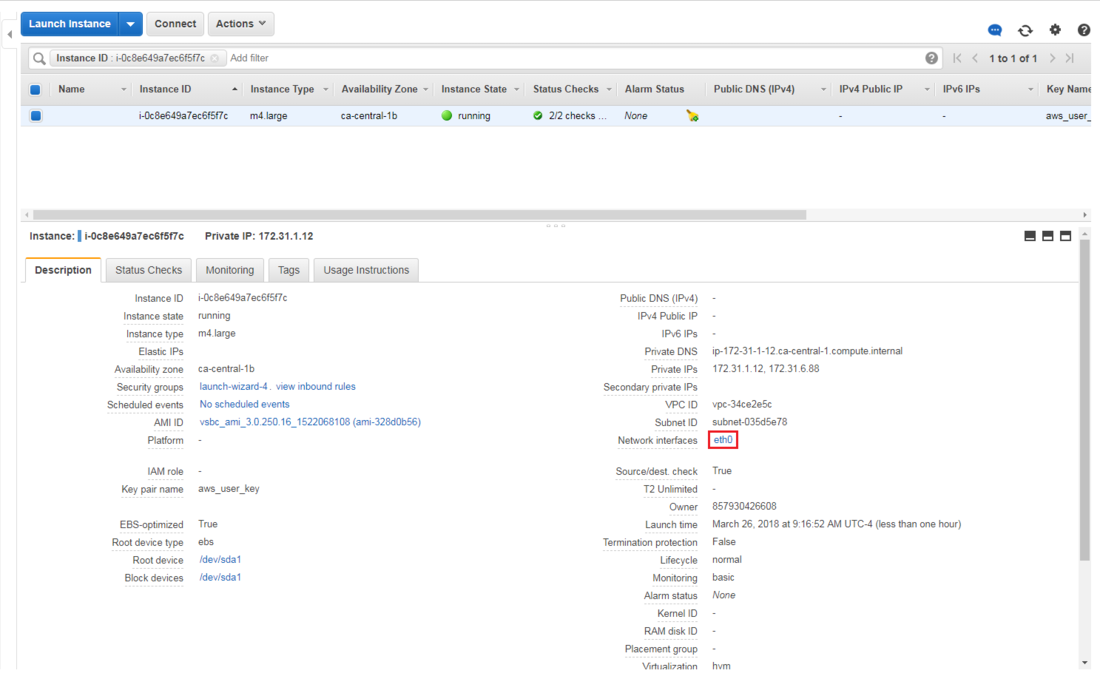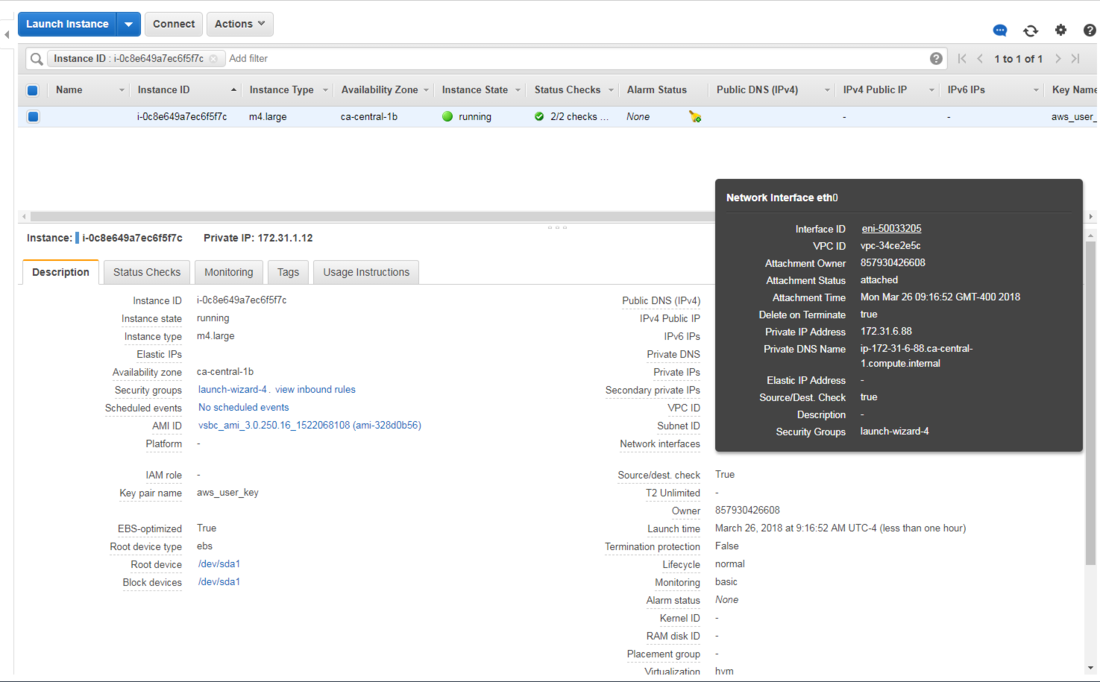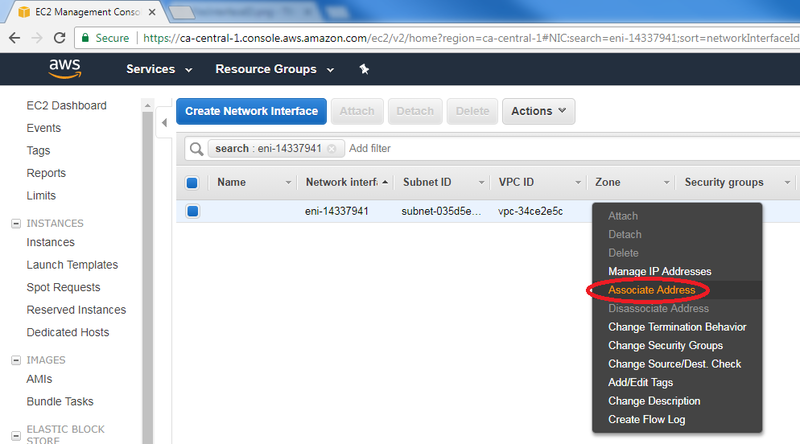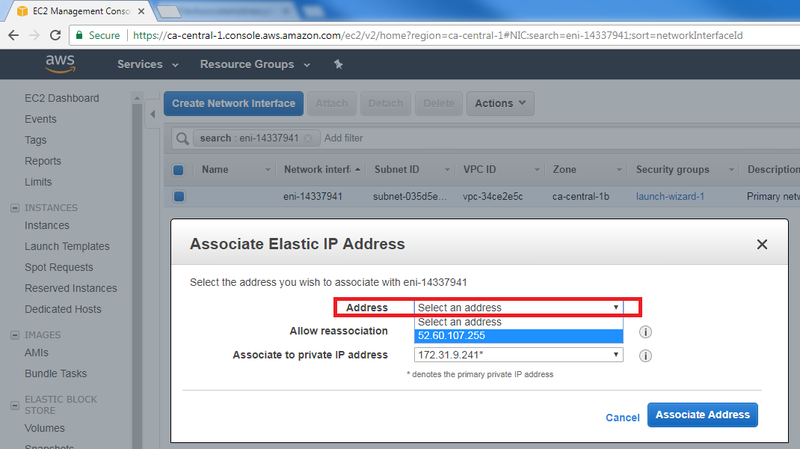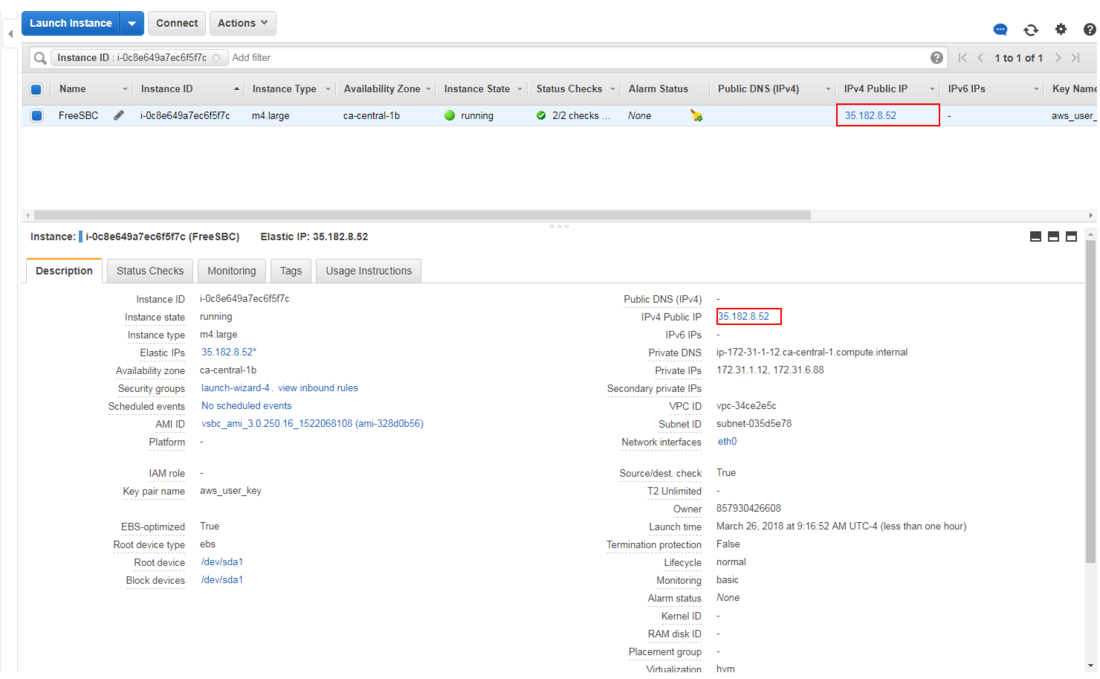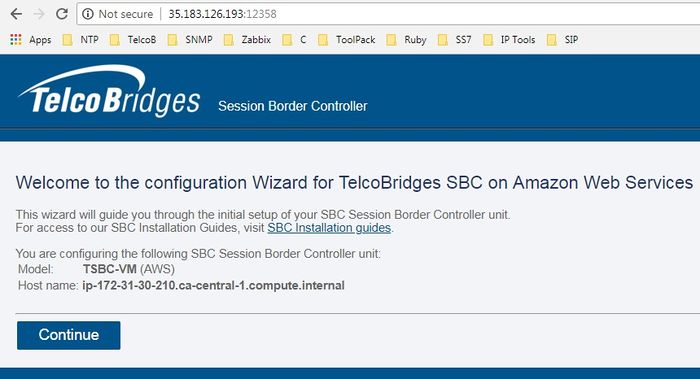FreeSBC:Cloud:AWS Installation A
From TBwiki
(Difference between revisions)
(→Optional: Adding additional interface) |
(Added performance table) |
||
| Line 26: | Line 26: | ||
** C3, C4, D2, I2, M4 (excluding m4.16xlarge), and R3 instances ([https://docs.aws.amazon.com/AWSEC2/latest/UserGuide/enhanced-networking.html Supported instances from Amazon documentation]) | ** C3, C4, D2, I2, M4 (excluding m4.16xlarge), and R3 instances ([https://docs.aws.amazon.com/AWSEC2/latest/UserGuide/enhanced-networking.html Supported instances from Amazon documentation]) | ||
*** Note: The Paris region is not supported at this time, since it does not have any of the supported instance types. | *** Note: The Paris region is not supported at this time, since it does not have any of the supported instance types. | ||
| + | * This is the list of approximate performances for different AWS instance types. Results may vary according to configuration. | ||
| + | {| cellpadding="5" border="1" class="wikitable" | ||
| + | |- | ||
| + | ! width="150" style="background: none repeat scroll 0% 0% rgb(239, 239, 239); -moz-background-inline-policy: continuous;" | EC2 Instance | ||
| + | ! width="100" style="background: none repeat scroll 0% 0% rgb(239, 239, 239); -moz-background-inline-policy: continuous;" | AWS CPU cores | ||
| + | ! width="100" style="background: none repeat scroll 0% 0% rgb(239, 239, 239); -moz-background-inline-policy: continuous;" | Sessions/s | ||
| + | ! width="100" style="background: none repeat scroll 0% 0% rgb(239, 239, 239); -moz-background-inline-policy: continuous;" | Sessions with RTP anchoring | ||
| + | ! width="200" style="background: none repeat scroll 0% 0% rgb(239, 239, 239); -moz-background-inline-policy: continuous;" | Sessions with Media bypass | ||
| + | |- | ||
| + | | valign="top" | | ||
| + | m4.large | ||
| + | | valign="top" | | ||
| + | 2 | ||
| + | | valign="top" | | ||
| + | 50 | ||
| + | | valign="top" | | ||
| + | 400 | ||
| + | | valign="top" | | ||
| + | 32,000 | ||
| + | |- | ||
| + | | valign="top" | | ||
| + | m4.xlarge | ||
| + | | valign="top" | | ||
| + | 4 | ||
| + | | valign="top" | | ||
| + | 215 | ||
| + | | valign="top" | | ||
| + | 750 | ||
| + | | valign="top" | | ||
| + | 60,000 | ||
| + | |- | ||
| + | | valign="top" | | ||
| + | c4.xlarge | ||
| + | | valign="top" | | ||
| + | 4 | ||
| + | | valign="top" | | ||
| + | 215 | ||
| + | | valign="top" | | ||
| + | 750 | ||
| + | | valign="top" | | ||
| + | 60,000 | ||
| + | |- | ||
| + | | valign="top" | | ||
| + | c4.2xlarge | ||
| + | | valign="top" | | ||
| + | 8 | ||
| + | | valign="top" | | ||
| + | 575 | ||
| + | | valign="top" | | ||
| + | 2,000 | ||
| + | | valign="top" | | ||
| + | 60,000 | ||
| + | |- | ||
| + | | valign="top" | | ||
| + | m4.4xlarge | ||
| + | | valign="top" | | ||
| + | 16 | ||
| + | | valign="top" | | ||
| + | 650 | ||
| + | | valign="top" | | ||
| + | 4,000 | ||
| + | | valign="top" | | ||
| + | 60,000 | ||
| + | |- | ||
| + | | valign="top" | | ||
| + | m4.10xlarge | ||
| + | | valign="top" | | ||
| + | 40 | ||
| + | | valign="top" | | ||
| + | 650 | ||
| + | | valign="top" | | ||
| + | 4,800 | ||
| + | | valign="top" | | ||
| + | 60,000 | ||
| + | |- | ||
| + | |} | ||
| + | |||
| + | |||
[[File:SelectResources.png| 800px]] | [[File:SelectResources.png| 800px]] | ||
Revision as of 08:34, 29 October 2020
This page is intended to give assistance to people launching an instance of ProSBC using an Amazon Machine Image (AMI) on Amazon Web Service (AWS).
Contents |
Instantiate a ProSBC
- After logging in your Amazon account, click on “EC2” in the main AWS console:
- On the left menu, click on “AMIs”:
- Click on the filter drop list and select “Private image” to locate ProSBC AMI:
- Select the region matching the region of the ProSBC AMI you want to test. If you don't know it, try "Canada (Central)".
- Select the image and click “Launch”:
- Select the instance type and its resources. The recommended instance type is:
- m4.large (2 vCPU, 8 GiB)
- Supported instance type are:
- C3, C4, D2, I2, M4 (excluding m4.16xlarge), and R3 instances (Supported instances from Amazon documentation)
- Note: The Paris region is not supported at this time, since it does not have any of the supported instance types.
- C3, C4, D2, I2, M4 (excluding m4.16xlarge), and R3 instances (Supported instances from Amazon documentation)
- This is the list of approximate performances for different AWS instance types. Results may vary according to configuration.
| EC2 Instance | AWS CPU cores | Sessions/s | Sessions with RTP anchoring | Sessions with Media bypass |
|---|---|---|---|---|
|
m4.large |
2 |
50 |
400 |
32,000 |
|
m4.xlarge |
4 |
215 |
750 |
60,000 |
|
c4.xlarge |
4 |
215 |
750 |
60,000 |
|
c4.2xlarge |
8 |
575 |
2,000 |
60,000 |
|
m4.4xlarge |
16 |
650 |
4,000 |
60,000 |
|
m4.10xlarge |
40 |
650 |
4,800 |
60,000 |
- Click “Add Storage” to proceed to the next page:
- Change the Volume Size to 40Gb.
- Select "Volume Type": gp2
- Check the box "Delete on Termination"
- Click “Add Tags” to proceed to the next page.
- You can leave the default parameters as they are.
- Click “Configure Security Group” to proceed to the next page:
- Select "Create a new security group". We recommend that you simply open all ports on your own IP address, since the SBC contains its own internal firewall:
| Rule | Type | Port Range | Source IP |
|---|---|---|---|
| All traffic | All traffic | 0 - 65535 | (Use your own public IP) |
- Click “Launch”. Be aware: you will be billed by Amazon for the instance resources:
- You will be prompted to create a key pair, allowing you to securely connect to your instance. Select “Create a new key pair” if you do not own one, and give it a name. Then, click on “Download Key Pair” to download a .pem file since it is needed for a SSH connection. (Note: Make sure to not lose it, since you would then lose access the the SSH connection for the instance):
- Click on “Launch Instances”:
- You can view your instance by clicking on “View Instances”:
- Select the instance you just created and feel free to give it a name:
Optional: Elastic IP Creation section
- If you want to use an associate public IP generated by Amazon (called "Elastic IP"). Click on "Elastic IP" on the left, then click on "Allocate new address":
- Click on "Allocate IP". A new public IP will be generated by Amazon:
- Click on "Close":
Optional: Elastic IP association section
- Go to the left pane and click on "Instance". Then select the instance "ProSBC" to display its description:
- Find the eth0 network interface in the instance description:
- Click on the eth0 Network Interface, then click on the "Interface ID" link:
- Right-click on the selected Network Interface, then click "Associate Address":
- In the Address list, select the public IP to associate with the main Network Interface. Then, click on "Associate Address":
- Click on "Instances" on the left pane and select "ProSBC" instance. Check if your instance is associated with a public IP:
Optional: Adding additional interface
Click on the following link to see how to add an additional interface to an existing instance
Accessing the TSBC-SW
Accessing the TSBC-SW web portal
- Open a web browser to the management IP of the TSBC, on port 12358. Example if your Instance public IP address is 35.183.126.193, the URL would be:
http://35.183.126.193:12358
Take note that it may take a while for the ProSBC system to make the Web Portal available (around 3-5 minutes).
- From here, you can go to Web Portal Initial Configuration Guide to continue the installation.
Web Portal Initial Configuration
Click on the following link to pursue installation from the web portal: TSBC-SW:WebPortal:Initial Configuration

